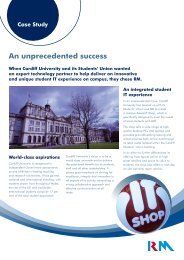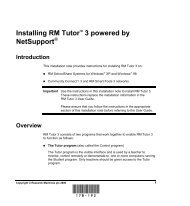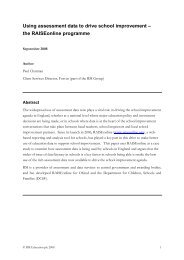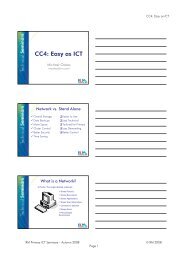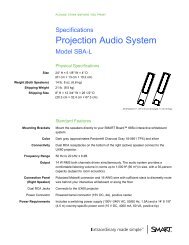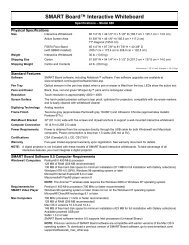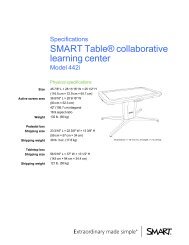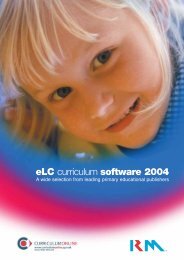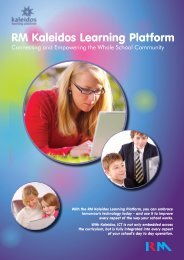The Primary Capital Programme - RM.com
The Primary Capital Programme - RM.com
The Primary Capital Programme - RM.com
Create successful ePaper yourself
Turn your PDF publications into a flip-book with our unique Google optimized e-Paper software.
Let’s follow the process that a school could adopt to achieve curriculum-focus in its new build or refurbishment. To do this, we’ll choose a<br />
fictional school, Abingdon Park <strong>Primary</strong> and its desire to create a learning environment that children and teachers want to learn and teach in.<br />
One that is safe, secure, inspirational, exciting, and wel<strong>com</strong>ing.<br />
(i)<br />
Vision Planning<br />
In our example, Abingdon Park <strong>Primary</strong> School begins to consider<br />
what its aims are for learning. Even at this early stage, dialogue and<br />
partnerships is important. Schools that have successfully managed<br />
this process, talk of the importance of involving local <strong>com</strong>munities,<br />
parents, staff, governors and the local authority. Developing a joint<br />
sense of ownership and a mandate for the vision are important steps<br />
in the building of the new school. What follows isn’t an exhaustive<br />
list, there could well be other things that you might wish to add, but<br />
let’s assume this is the basis for Abingdon Park <strong>Primary</strong>’s educational<br />
vision.<br />
• Embedding the principles of the five out<strong>com</strong>es of Every Child<br />
Matters<br />
• Developing effective and sustainable personalised learning<br />
• Engaging pupils in learning<br />
• Encouraging pupil voice<br />
• Embedding effective inclusion practice across the school<br />
• Ensuring breadth and depth in learning through more thematic<br />
teaching<br />
• Educating for sustainable development<br />
• Developing a professionally curious and qualified staff<br />
• Developing global citizens.<br />
(ii)<br />
Learning Space Design<br />
Different types of spaces support different styles of learning.<br />
Dr. Kenn Fisher 3 has developed the following image to illustrate this:<br />
Figure 2: Learning Spaces<br />
3<br />
Dr. Kenn Fisher 2006, Building Excellence -<br />
Linking the curriculum for excellence to the design of learning environments<br />
Abingdon Park School now starts to choose which type of spaces<br />
they will need to meet their curriculum aims. Again, <strong>com</strong>munication<br />
is important to identify the needs of different stakeholders. Parents<br />
will have concerns for the well-being of their children. Teachers may<br />
have concerns for the accessibility of learning resources. <strong>The</strong> local<br />
authority architect will have requirements to ensure buildings are<br />
energy-efficient and cost-effective. Bringing parties together at an<br />
early stage develops shared ownership and reduces the burden on<br />
individuals, especially the head teacher. Indeed, delegating tasks and<br />
building the capacity of staff to accept responsibilities are important<br />
considerations in themselves.<br />
Abingdon Park School’s plans for different spaces for different styles<br />
of teaching and learning include:<br />
• Collaborative working space<br />
• Flexible/moveable learning spaces<br />
• Accessible and secure storage space<br />
• Space for specialised use<br />
• Project space<br />
• Wet areas<br />
• Space for outdoor learning<br />
• Spaces for thinking & reflection<br />
• Display space<br />
• Breakout space<br />
• Presentation, large group space<br />
• Teacher meeting space<br />
• Dining, catering space.




